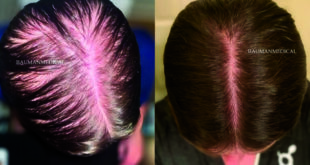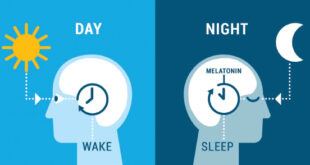 Have you ever wondered “what’s going on in her brain” about your 6 year old? Or “what in the world makes him act that way” about your husband? Or have you ever been around someone and struggled to figure out why they say the things that they say?
Have you ever wondered “what’s going on in her brain” about your 6 year old? Or “what in the world makes him act that way” about your husband? Or have you ever been around someone and struggled to figure out why they say the things that they say?
Psychological theorists such as Albert Ellis have taught us that how we think will directly affect how we feel which in turn affects how we behave. Yes, this is true but have you ever wondered if there is something beyond your consciousness that is controlling your thinking? Have you ever experienced this: “I’ve tried and tried but I feel as if there’s a force that keeps me from fixing this thinking even though I know it needs to change.”
Through neuroscience research we have learned that neuron firing patterns control our thinking before we do. Research has also discovered the phenomenon of “Neuroplasticity” which is simply defined as the brain’s ability to change throughout a person’s life. Theorists believe that our experiences and thoughts can change neuron firing patterns. It is also believed that injuries to either the structure of the brain (lesions, tumors) or to the soft tissue (closed head injury, brain bruise) can also change neuron firing patterns as well as psychological trauma, viruses, and chemicals either from medication, substance abuse, or the environment. And of course, there are many more of us that have inherited a disrupted brain pattern and have to sit back and watch history repeat itself through generations.
We are extremely vulnerable to changes in the neuron firing patterns in our brain. But does that mean that we’re all doomed? Not exactly. Because not all conditions cause disruption, we really have no way of knowing if a traumatic event, hereditary condition or external force will or will not impact our brain. So we’re left wondering, is my brain pattern controlling me? Or am I controlling my brain pattern?
Do I have a disrupted brain pattern?
How do we know what, where, when and how neural patterns have been disrupted or are “off balance”? Performing a Quantitative EEG (QEEG or Brain Map) is how Neurotherapy practitioners can determine the precise location, “where”, as well as details, “what”, of the neuron firing disruption. Determining the “when” and “how” is trickier and requires special conditions in order to provide an accurate hypothesis. As no two brains are alike, no two people will have the same symptoms even when the same areas are being impacted.
Even though every brain is different, and symptoms can vary, we do know areas of functioning that can be impacted. For example, when the neural pattern in the frontal lobe of the brain is disrupted, it can be hypothesized that a person will have trouble regulating emotions. Depending on the precise area as well as details of the disruption, we are able to predict possible executive functioning difficulties, depression, anxiety, negative thinking, word finding problems, OCD behaviors, anger control issues, impulsivity, trauma responses, and problems with social interactions, just to name a few. So as the neuron firing pattern is out of balance or not working properly, our thought patterns can also be out of balance and not working properly.
What is a Quantitative EEG (QEEG or Brain Map)?
The QEEG is also called a brain map and does just that…it gives us a map of what is going on with the entire brain at one time. We attach electrodes to the whole head, 19 spots, and then record the brain waves with eyes open for 5 minutes and with eyes closed for 10 minutes. This recording is then sent to an independent specialist to be read and analyzed. They are able to not only give us a summary of significant findings but the report also shows the results of analyzing the data several different ways. The brain activity is compared spot by spot over the head where connections, symmetry, and how different parts of the brain are communicating are compared to a database of peers (same sex, handedness and age). It can help us see what areas need to be addressed more efficiently than just training spot by spot according to symptoms.
So, what do I do with the information
I get from a Brain Map?
As the concept of Neuroplasticity describes how patterns can veer off course and wreak havoc in our brains and lives, the same concept can be used to correct disrupted patterns. The technique is called Neurofeedback. Neurofeedback, also known as EEG biofeedback, has been studied and practiced since the late 60’s. It is exercise for your brain by allowing you to see the frequencies produced by different parts of your brain in real-time and then through visual and auditory feedback, teaches the brain to better regulate itself. Neurofeedback can be used to help detect, stimulate, and/or inhibit activity in the brain safely and without medication. It can help restore a wider “range of motion” in brain states, much like physical therapy does for the body.
While the client sits comfortably watching a movie or pictures appear on the screen (a calm and focused state), the EEG equipment measures the frequency or speed at which electrical activity moves in the areas where electrodes have been placed. This information is sent to the therapist’s computer. The therapist is then able to determine what frequencies are out of balance. For example, when the EEG shows that you are making too many “slow” or “sleepy” waves (delta/theta) or too many “fast” waves (high beta), the therapist adjusts a reward band to encourage more balanced activity. This encouragement or “reward” happens through visual recognition of the changes on the screen and the auditory reinforcement of “beeps”.
How does a “beep” or sound train
my brain to work better?
The auditory or sound reward that corresponds to an increase or decrease in desired brainwave activity is able to affect the brain on a neurological level. Auditory reward stimulates auditory pathways, impacts the vestibular system, and has many connections to the reticular activating system, which modulates wakefulness and attention. These systems operate in our brains without conscious effort. Therefore, neurofeedback teaches your brain through automated learning with little or no behavioral effort. Another way to say this is that neurofeedback involves operant conditioning or learning. This type of learning teaches us through a reinforced reward system. The auditory reward (beep) is delivered on a schedule of reinforcement that promotes optimal learning; not too hard and not too easy. This schedule of reinforcement or reward provides just the right amount of resistance to evoke a positive learning pattern.
What types of conditions does neurofeedback help?
Symptoms of these conditions, among others, can improve through neurofeedback training:
• Anxiety • Sleep disorders • Depression • ADD/ADHD
• Sensory processing disorder • Bipolar disorder
• Seizure disorders • Auditory/visual processing
• Chronic pain/Fibromyalgia • Migraines/headaches
• Traumatic brain injuries • Stroke • Cognitive decline
• Peak performance • Oppositional defiant disorder
• Rages/mood swings • Attention/focus/concentration
• Reactive attachment disorder • Autism/Asperger’s
• Learning disabilities • Obsessive compulsive disorder
How do I get started?
Now that we understand that neuron firing in the brain is affected by our thinking and that we can change our thinking by changing the neuron patterns in the brain through Neurofeedback, the next step is simple, just reach out and contact us. The Brain and Wellness Center staff will answer all of your questions, and help you get scheduled during a scheduled telephone consultation. Call, email or message us today! Brain and Wellness Center, 5458 Town Center Road, Suite 13, Boca Raton, FL 33486. (561) 206-2706, e-mail us at info@bocabraincenter.com, text us at (561) 206-2706 or visit our website at www.BocaBrainCenter.com.
5458 Town Center Road, Suite 13
Boca Raton, FL 33486
(561) 206-2706
www.BocaBrainCenter.com
 South Florida Health and Wellness Magazine Health and Wellness Articles
South Florida Health and Wellness Magazine Health and Wellness Articles




